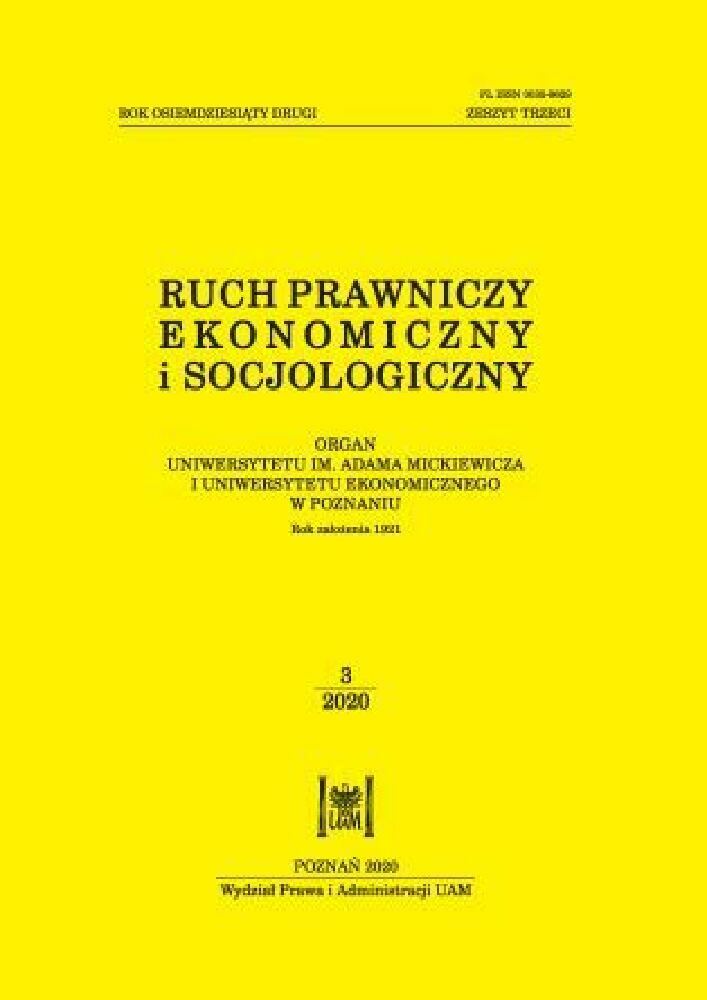Abstract
The Polish government’s policy of financial support for families with children, known as ‘Family 500+’, has many supporters and opponents. The aim of the article is not to assess whether or not this policy is fair, but to analyse its effects on the economy using the Computable General Equilibrium (CGE) model. For the purposes of this study, a standard single country CGE model was constructed and calibrated using the GAMS software. The following conclusions can be drawn about the impact of the introduction of the ‘Family 500+’ Programme on the Polish economy. Social transfers will increase consumption, domestic production and imports. With the closure of the model assuming an increase in the budget deficit, these effects are stronger than under the closure assuming an increase in budget revenues. The impact on investments is negative. However, the simulation results depend on the capital block closure. With the neoclassical closure, it is assumed that investment adjusts to saving, so an increase in consumption is associated with a decrease in savings and hence a decrease in investment. With Keynesian closure, investment is not dependent on the level of savings, so an increase in government spending will not lead to a decline in investment.
References
Brzeziński M., Najsztub, M. (2017). The impact of “Family 500+” Programme on household incomes, poverty and inequality. Polityka Społeczna 44(1): 16–25.
Chrzanowska M., Landmesser, J.M. (2017). Symulacja efektów ex ante programu “Rodzina 500+”, [w:] Taksonomia 28, Klasyfikacja i analiza danych – teoria i zastosowania. Prace Naukowe UE we Wrocławiu 468: 38–46.
Dervis K., de Melo, J., Robinson, S. (1982). General Equilibrium Models for Development Policy, New York: Cambridge University Press.
Devarajan, S., Lewis, J.D., Robinson, S. (1994). Getting the Model Right: The General Equilibrium Approach to Adjustment Policy. Mimeo.
Eltalla, H. (2017). The impact of government expenditure on the Palestinian economy: A CGE Analysis. Journal of Economics and Sustainable Development 8: 2222–2855.
Golinowska, S., Sowa-Kofta, A. (2017). Combating poverty through family cash benefits: on the first results of the Programme “Family 500+” in Poland, Polityka Społeczna 44(1): 7–13.
GUS (2016). Rocznik demograficzny. Warszawa.
GUS (2019). Rocznik demograficzny. Warszawa.
Hagemejer, K. (2017). Is the 500+ child benefit programme overgenerous? Polish social protection expenditure on benefits and services for families with children compared with other Member Countries of the EU and OECD. Polityka Społeczna 44(1): 1–7.
Jung, H.S., Thorbecke, E. (2003). The impact of public education expenditure on human capital, growth, and poverty in Tanzania and Zambia: a general equilibrium approach. Journal of Policy Modeling 25(8): 701–725.
Kłopocka, A.M. (2019). The Family 500+ Programme and functioning of Polish households, [w:] red. I. Kowalska, A. Wasilewska (red.), Stan i perspektywy rozwoju sektora finansów publicznych. Warszawa: SGGW: 73–84.
Landmesser, J., Dudek, H., Chrzanowska, M. (2017): The analysis of the Polish “Family 500+” Programme effects using EUROMOD microsimulation model. Double-blind Peer-reviewed Proceedings of the International Scientific Conference Hradec Economic Days 7(1): 506–512.
Magda I., Brzeziński M., Chłoń-Domińczak A., Kotowska I., Myck M., Najsztub M., Tyrowicz J., „Rodzina 500 plus” – ocena programu i propozycje zmian. <https://for.org.pl/pl/publikacje/raporty-for/raport-rodzina-500-plus-ocena-programu-i-propozycje-zmian>.
Magda, I., Kiełczewska, A., Brandt, N. (2018). The “family 500+” child allowance and female labour supply in Poland. OECD Economics Department Working Papers 1481.
McDonald, S., Thierfelder, K. (2007). A Static Applied General Equilibrium Model: Technical Documentation STAGE Version 1, July 2007.
Myck, M. (2016). Estimating labour supply response to the introduction of the Family 500+ Programme. CenEA Working Paper Series, WP01/16.
Odior, E.S.O. (2011). Government spending on education, economic growth and long waves in a CGE micro-simulation analysis: the case of Nigeria. British Journal of Economics, Finance and Management Sciences 1(2): 74–87.
Pierzchalska M. (2017). The Family 500+ Programme: potential impact on demographic processes, the labour market and the pension system. Polityka Społeczna 44(1): 42–50.
Pyatt, G. (1987). A SAM approach to modelling. Journal of Policy Modeling 10: 327–352.
Pyatt, G. (1991). Fundamentals of social accounting. Economic Systems Research 3: 315–341.
Radzik, P. (2017). The Influence of the Government Family 500+ Programme on the Female Labour Force Participation Rate. VIII International Scientific Conference Analysis of International Relations. Katowice: 57–65.
Robinson S., Kilkenny, M., Hanson K. (1990). USDA/ERS Computable General Equilibrium Model of the United States, Economic Research Services, USDA, Staff Report AGES 9049.
Ruzik-Sierdzińska, A. (2018). Krótkookresowe skutki programu Rodzina 500+. Studia z Polityki Publicznej 17(1): 63–76.
Szukalski, P. (2018). Zachowania prokreacyjne w latach 2016–2017. Kontynuacja trendów czy zmiana? Polityka Społeczna, 45(10): 1–4.
Wiśniewska, A.,Musiał, M., Świecka, B. (2017). The Program “Family 500 Plus” – Implications for Household Finance in Poland. CBU International Conference Proceedings: 490–494.
License
Copyright (c) 2020 WPiA UAM

This work is licensed under a Creative Commons Attribution-NonCommercial-NoDerivatives 4.0 International License.





